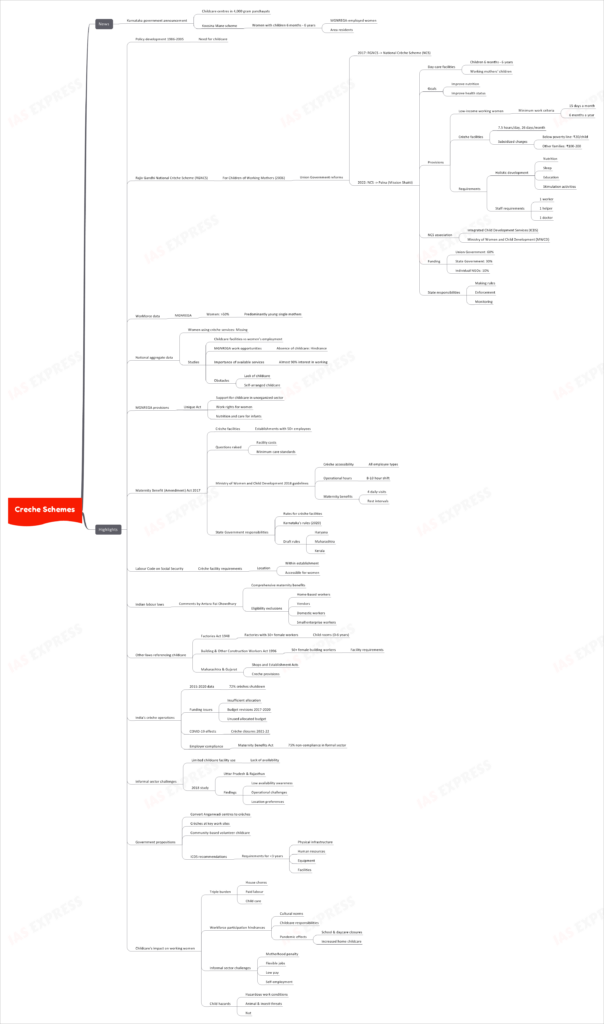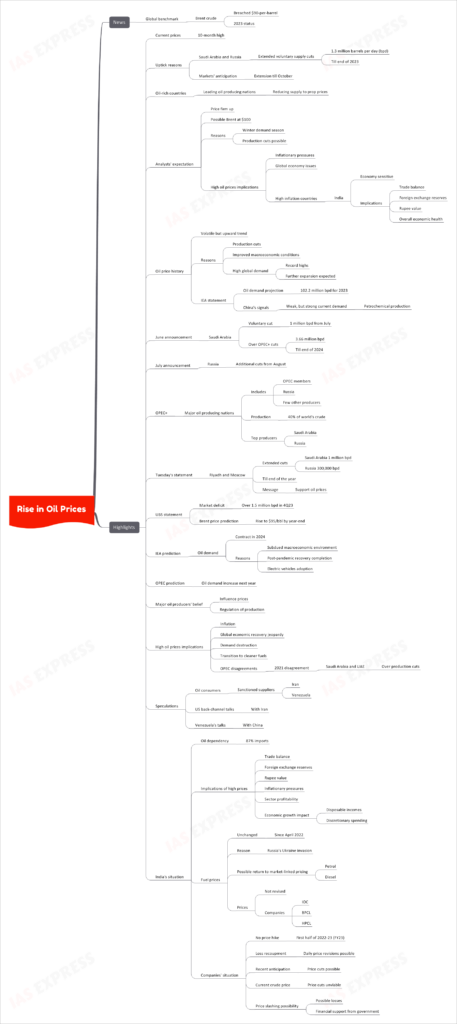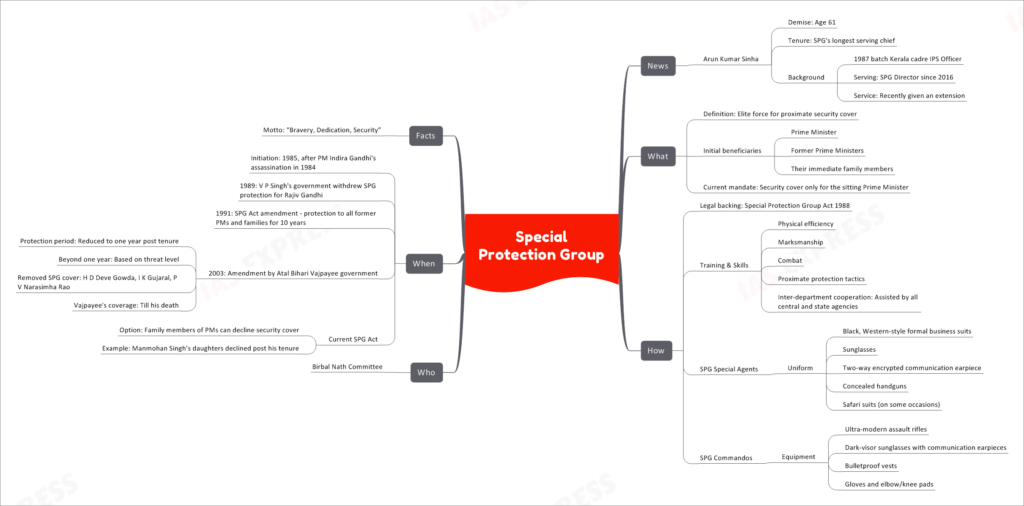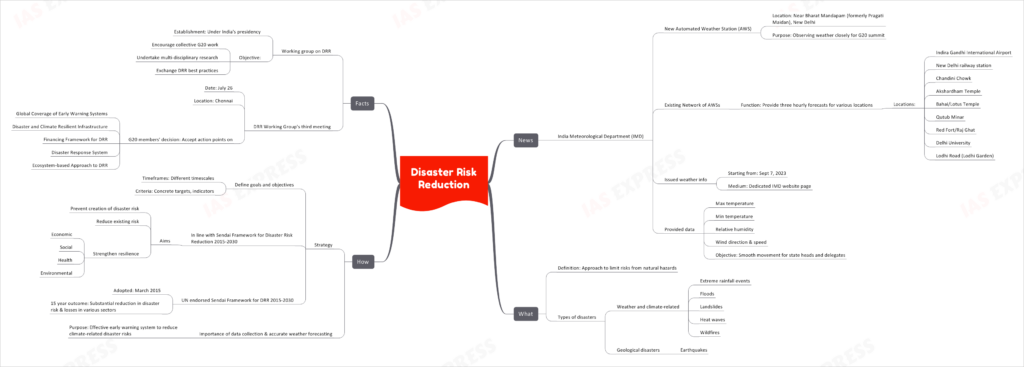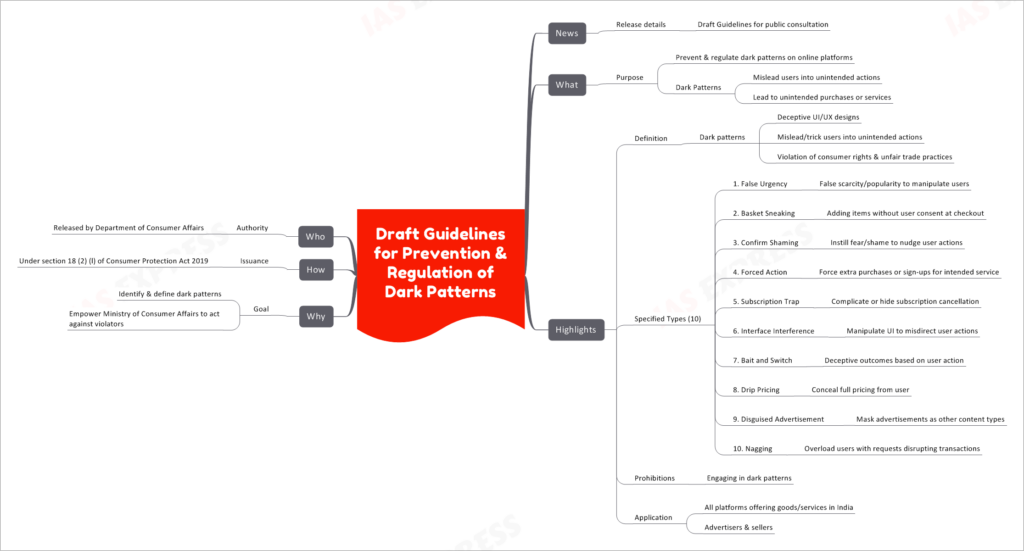[Newsbits] 07.09.2023

Crèche Schemes
Karnataka government has taken an initiative to launch childcare centres in 4,000 gram panchayats under the "Koosina Mane" scheme. This scheme primarily targets MGNREGA-employed women and area residents with children aged between 6 months to 6 years.
A Glimpse of Policy Evolution:
- 1986-2005: The span saw a growing realization for the need for childcare.
- Rajiv Gandhi National Crèche Scheme (RGNCS): Initiated in 2006, this scheme underwent several transformations:
- 2017: Renamed to National Crèche Scheme (NCS).
- 2022: Reformed into "Palna" under Mission Shakti. It focuses on:
- Providing day-care facilities to children aged between 6 months to 6 years.
- Aim to improve nutrition and health statuses.
- Special provisions for low-income working women.
- Association with Integrated Child Development Services (ICDS) and the Ministry of Women and Child Development (MWCD).
- Funding split: Union Government (60%), State Government (30%), and NGOs (10%).
Workforce Dynamics:
MGNREGA, a unique act that champions support for childcare in the unorganized sector, boasts of a female workforce consisting of more than 50% members. The majority of these women are young single mothers. The absence of childcare often serves as a significant impediment to their work opportunities under MGNREGA.
Legislative Changes and Provisions:
- Maternity Benefit (Amendment) Act 2017: Mandates crèche facilities in establishments with 50+ employees.
- Labour Code on Social Security: Defines crèche facility requirements and locations.
- Indian Labour Laws: As commented by Antara Rai Chowdhury, it provides comprehensive maternity benefits but excludes several workers.
- Other Laws: Includes the Factories Act 1948 and Building & Other Construction Workers Act 1996, which mandate childcare provisions based on the number of female workers.
State of Crèches in India:
Between 2015-2020, about 72% of crèches were shut down, largely due to funding issues and insufficient budget allocation. The COVID-19 pandemic further strained these facilities, leading to more closures in 2021-22. Moreover, 75% of employers in the formal sector don't comply with the Maternity Benefits Act.
Informal Sector and Challenges:
Childcare facilities are scarcely used due to lack of availability and awareness. The government has proposed several solutions, such as converting Anganwadi centres to crèches, setting up crèches at significant worksites, and community-based volunteer childcare.
Impact of Childcare on Working Women:
Working women often face a "triple burden" - managing household chores, performing paid labour, and providing childcare. Several factors, including cultural norms and the lack of adequate childcare facilities, deter their active participation in the workforce. The COVID-19 pandemic, with its subsequent school and daycare closures, further exacerbated these challenges.
Rise in Oil Prices
The global oil benchmark, Brent crude, has breached and consistently hovered around the $90-per-barrel mark, marking a 10-month high in 2023.
Key Factors Behind the Uptick:
- Supply Cuts: Major oil producers, notably Saudi Arabia and Russia, have extended voluntary supply cuts of 1.3 million barrels per day (bpd) until the end of 2023. This move surpassed market expectations, which anticipated an extension only till October.
- Strategies from Oil-Rich Countries: Some of the world's leading oil-producing nations have reduced supply to bolster prices.
- Analyst Projections: There's speculation that Brent could touch $100, especially as the winter demand season approaches. The potential for further production cuts only strengthens this sentiment. The repercussions of such high prices could include mounting inflationary pressures globally. For countries like India, where the economy is highly sensitive to oil prices, implications span across trade balance, foreign exchange reserves, and the value of the rupee, which could have a cascading effect on the nation's overall economic well-being.
- History & Predictions: The trajectory of oil prices has been volatile yet on an upward trend. The International Energy Agency (IEA) projects an oil demand of 102.2 million bpd for 2023. Factors such as production cuts, improved macroeconomic conditions, and an unprecedented global demand have caused this surge. China, for instance, showcases weak future signals but maintains strong current demand driven by its petrochemical production.
Major Announcements & Developments:
- Saudi Arabia: In June, they announced a voluntary cut of 1 million bpd from July, in addition to OPEC+ cuts of 3.66 million bpd until the end of 2024.
- Russia: In July, they confirmed additional cuts starting from August.
- OPEC+: Comprising major oil-producing nations, including OPEC members, Russia, and several other producers, this entity is responsible for about 40% of the world's crude production. Top producers within this group are Saudi Arabia and Russia.
- Recent Updates: Both Riyadh and Moscow extended their production cuts until the end of the year, signaling their intent to support oil prices.
Market Insights:
- UBS predicts a market deficit of over 1.5 million bpd in the 4th quarter of 2023, with Brent prices potentially rising to $95/bbl by the end of the year.
- IEA's Prediction: The demand for oil might contract in 2024 due to a subdued macroeconomic environment, the completion of post-pandemic recovery, and a growing shift towards electric vehicles.
- OPEC's Stance: They anticipate an increase in oil demand next year.
The Broader Implications:
High oil prices can:
- Stoke inflation.
- Jeopardize global economic recovery.
- Accelerate the shift to cleaner fuels.
- Cause disagreements within OPEC, as seen in 2021 between Saudi Arabia and the UAE over production cuts.
A Look at India:
India remains deeply impacted due to its heavy reliance on oil imports (87%). Rising prices impact the nation's trade balance, foreign exchange reserves, rupee value, inflationary pressures, and overall economic growth. Moreover, fuel prices have remained unchanged since April 2022, primarily due to geopolitical tensions like Russia's invasion of Ukraine. This has led to speculation about the return of market-linked pricing for fuels like petrol and diesel. Despite anticipation for price cuts, the prevailing high crude prices make reductions unviable. If companies consider price slashing, they might incur losses unless there's financial backing from the government.
Special Protection Group
The Special Protection Group (SPG) stands as the pinnacle of elite security forces in India, designated to safeguard the nation's highest executive authority - the Prime Minister.
Latest News
Loss of a Luminary
The SPG community mourns the demise of Arun Kumar Sinha, its longest-serving chief. At the age of 61, Sinha, a 1987 batch Kerala cadre IPS officer, left behind a significant legacy. Appointed as the SPG Director in 2016, Sinha was in service till his last breath, having recently been granted an extension.
A Deeper Look: What is SPG?
Definition: SPG, an elite force, primarily offers proximate security cover.
Originally, the beneficiaries encompassed the Prime Minister, former Prime Ministers, and their immediate families. However, with evolving security dynamics, the current mandate focuses solely on the security of the sitting Prime Minister.
SPG's Modus Operandi
- Legal Backing: The operations and mandates of SPG are grounded in the Special Protection Group Act of 1988.
- Training & Skills: SPG agents are trained extensively in:
- Physical efficiency
- Combat and proximate protection tactics
- Marksmanship
- Collaboration, as they're assisted by all central and state agencies for comprehensive protection.
- Dress Code:
- SPG Special Agents: Recognizable by their black, western-style formal suits, sunglasses, encrypted earpieces, concealed handguns, and, occasionally, safari suits.
- SPG Commandos: Equipped with ultra-modern assault rifles, dark-visor sunglasses, bulletproof vests, gloves, and protective elbow/knee pads.
Genesis of SPG
- Recommendation: The creation of SPG was advocated by the Birbal Nath Committee.
- Historical Timeline:
- 1985: SPG came into being, prompted by the assassination of PM Indira Gandhi in 1984.
- 1989: V P Singh's administration discontinued SPG protection for Rajiv Gandhi.
- 1991: The SPG Act was amended to provide protection to all former PMs and their families for a decade.
- 2003: The Act underwent a significant change during Atal Bihari Vajpayee's regime. The protection duration was curtailed to a year after tenure, with extensions based on threat assessments. Consequently, many former PMs like H D Deve Gowda, I K Gujaral, and P V Narasimha Rao had their SPG covers revoked. Notably, Vajpayee received SPG protection until his passing.
- The current provisions of the SPG Act grant family members of PMs the discretion to refuse security cover. For instance, post his tenure, Dr. Manmohan Singh's daughters opted out of the SPG protection.
Quick Facts
- Motto: "Bravery, Dedication, Security".
Disaster Risk Reduction
With an increase in climate change-related challenges, Disaster Risk Reduction (DRR) becomes paramount. India, recognizing the importance, is making significant strides in weather prediction and collaborative global efforts.
Latest News
India Meteorological Department (IMD) Takes the Helm
IMD has inaugurated a new Automated Weather Station (AWS) near Bharat Mandapam, formerly known as Pragati Maidan, in New Delhi. This installation aims to monitor the weather meticulously in light of the G20 summit.
Moreover, IMD's extensive network of AWSs is already serving various significant locations in New Delhi. These stations provide three-hourly forecasts for areas such as Indira Gandhi International Airport, New Delhi railway station, and various iconic sites in the city. Starting from September 7, 2023, weather data will be publicly available on a dedicated IMD website page. The data will encompass metrics like maximum and minimum temperature, relative humidity, and wind direction & speed. All these efforts converge to ensure a seamless movement for state heads and delegates.
Deep Dive: What is DRR?
Definition: DRR is a proactive approach designed to minimize risks stemming from natural calamities.
Types of Disasters: DRR majorly deals with:
- Weather and Climate-Related Disasters:
- Extreme rainfall events
- Floods
- Landslides
- Heatwaves
- Wildfires
- Geological Disasters:
- Earthquakes
How is DRR Effected?
The strategy for DRR is multi-faceted:
- Setting Clear Objectives: DRR approaches are pinned on well-defined goals, which are further quantified using concrete targets and indicators.
- Alignment with International Standards: The Sendai Framework for Disaster Risk Reduction 2015-2030, endorsed by the UN and adopted in March 2015, provides a blueprint. Its principal goal over the 15-year timeframe is to achieve a significant reduction in disaster risk & losses across various domains.
- Crucial Role of Data: Data collection, especially accurate weather forecasting, is the backbone of DRR. A robust early warning system can curtail risks from climate-induced disasters.
Notable Facts
- Working Group on DRR: Established under India's presidency, its primary purpose is to spur collective G20 work, stimulate multi-disciplinary research, and facilitate the exchange of DRR best practices.
- DRR Working Group's Milestone Meeting: On July 26, in Chennai, G20 members convened for the DRR Working Group's third meeting. Here, they reached a consensus on key action points such as:
- Global Coverage of Early Warning Systems
- Disaster and Climate Resilient Infrastructure
- Financing Framework for DRR
- Disaster Response System
- Ecosystem-based Approach to DRR
World Physiotherapy Day
World Physiotherapy Day is observed globally every year on September 8th. Established in 1996, this special day commemorates the establishment of physiotherapy as a profession in 1951.
The Essence of the Day
Purpose
The core purpose of World Physiotherapy Day is to commemorate the establishment of the physiotherapy profession. This day serves as a platform to celebrate and recognize the immense dedication and hard work of physiotherapists all over the world.
Significance
Physiotherapists play a pivotal role in the healthcare sector. They are instrumental in ensuring that individuals maintain optimal physical function, especially after injuries or illnesses. Their expertise aids patients in recovering and regaining their strength, mobility, and overall well-being. By observing World Physiotherapy Day, the global community honors and acknowledges the services and contributions of physiotherapists.
Theme of the Year: Arthritis
This year, the focus is on a critical health condition - Arthritis. Arthritis, an umbrella term for multiple joint-related disorders, severely impacts millions worldwide. Two primary types of arthritis being highlighted are:
Rheumatoid Arthritis
Description: Rheumatoid Arthritis (RA) is a chronic inflammatory disorder that doesn't just affect joints but can also impact multiple body systems.
Cause: RA is primarily an autoimmune disorder wherein the immune system mistakenly attacks the body's tissues.
Effects: The most apparent effects include damage to the joint lining, causing painful swelling, which can further result in bone erosion and joint deformity. Apart from the joints, RA can also adversely affect other body parts.
Treatment: While there are medications available to treat RA, it can lead to disabilities in severe cases.
Axial Spondyloarthritis
Description: This condition primarily causes pain and swelling in the spine and sacroiliac joint. It's a systemic disease, implying that it can affect other body parts and organs as well. There is also a noted genetic predisposition associated with the disease.
Symptoms: Common symptoms include pain in the low back, buttocks, and hips. In children, the pain often manifests in the hips, knees, or heels.
Draft Guidelines for Prevention and Regulation of Dark Patterns
The Department of Consumer Affairs has unveiled the Draft Guidelines for the Prevention and Regulation of Dark Patterns for public consultation. This move seeks to enhance the online experience for users and protect them from manipulative designs that might lead to unintended actions.
What Are Dark Patterns?
Dark patterns can be best described as deceptive UI/UX designs that mislead or trick users into taking unintended actions. Such deceptive maneuvers often lead to unintended purchases, subscriptions, or other services. They not only violate consumer rights but are also indicative of unfair trade practices.
Key Highlights of the Guidelines
Defined Dark Patterns
The guidelines have meticulously defined dark patterns as manipulative design tactics, including:
- False Urgency: Creating a fake sense of scarcity or popularity to influence user actions.
- Basket Sneaking: Deceptively adding items to a user's checkout without their consent.
- Confirm Shaming: Using fear or shame to sway a user's actions.
- Forced Action: Compelling users to make extra purchases or sign up for additional services to access the primary intended service.
- Subscription Trap: Making the process of subscription cancellation convoluted or hidden.
- Interface Interference: Deliberately designing the user interface to misdirect or confuse users.
- Bait and Switch: Leading users to unexpected outcomes based on their initial actions.
- Drip Pricing: Not revealing the full price upfront.
- Disguised Advertisement: Presenting ads in a manner that makes them appear as regular content.
- Nagging: Continuously bombarding users with repetitive requests or information, disrupting their primary task.
Strict Prohibitions
The guidelines strictly prohibit platforms from engaging in or promoting dark patterns.
Broad Application
These guidelines are applicable to all online platforms that offer goods or services within the Indian domain. This includes, but is not limited to, online retailers, service providers, advertisers, and sellers.
Objective & Legal Standing
The primary aim of these guidelines is twofold:
- Identify and Define: Clearly define what constitutes a dark pattern.
- Regulation: Provide the Ministry of Consumer Affairs with the necessary authority to take action against those indulging in such practices.
The issuance of these guidelines finds its legal foundation under section 18 (2) (l) of the Consumer Protection Act of 2019.
If you like this post, please share your feedback in the comments section below so that we will upload more posts like this.
